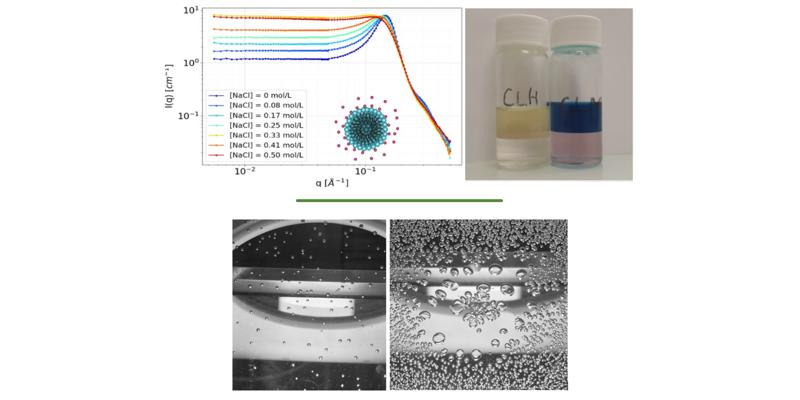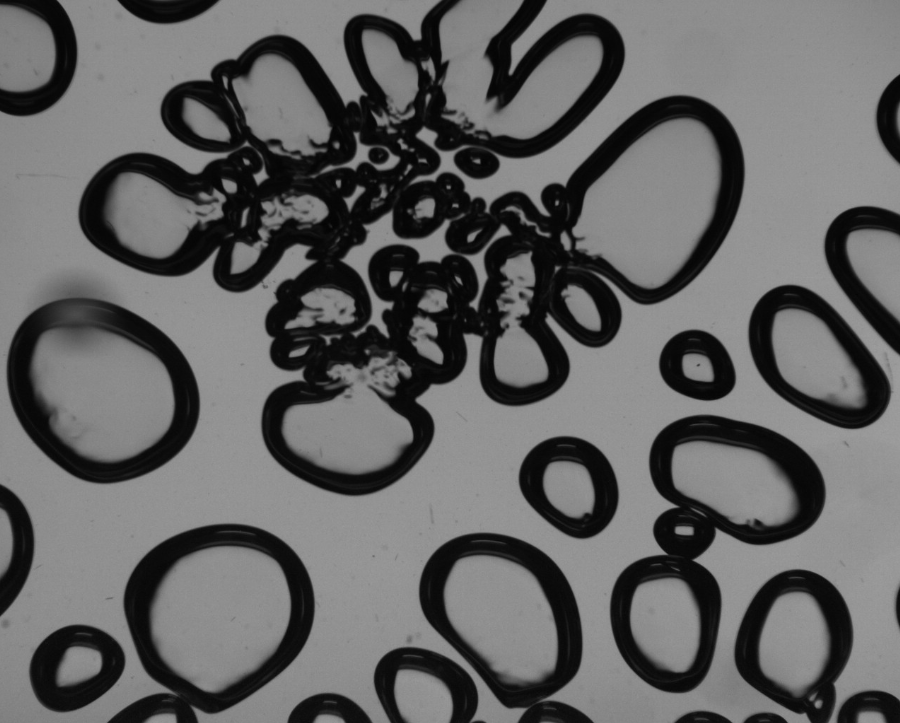- Imprimer
- Partager
- Partager sur Facebook
- Share on X
- Partager sur LinkedIn
Séminaire
Le 4 avril 2025

Bastien LEBREUX (PhD, MODI) // Carlos ARAUZ-MORENO (PostDoc, OPTIMA)
Aqueous Biphasic Systems: How does the addition of salt lead to phase separation?

Bastien LEBREUX (PhD, MODI)
Aqueous two-phase systems offer more environmentally friendly options than traditional solvents for metal separation. Some of the questions that arise are the structural organisation of these complex systems and how this organisation evolves with the addition of salt leading to phase separation. We are therefore coupling rheological measurements with structural measurements to show that the solution is a suspension of micelles that can be repulsive or attractive depending on the amount of salt present in the solution.
What do Champagne and a confined polymer have in common? The answer is bubbles!

Carlos ARAUZ-MORENO (PostDoc, OPTIMA)
During a dégustation de Champagne, the decompressed liquid releases CO2 into tiny—and often imperceivable—nucleation sites in the flute to dazzle the senses. The nucleation sites, which may be natural or artificial in origin, play a key role in lowering the energy requirement to grow bubbles in the liquid bulk. In this talk, I will show how by decompressing a confined polymer at elevated temperatures (polyvinyl butyral - PVB), one can mimic the physics of Champagne to nucleate and grow bubbles (or not!) depending on the imposed temperature and the amount of gas dissolved in the polymer bulk. The bubbles obtained thereof can be circular or irregular in shape depending on the size and form of the nuclei or the presence of neighboring bubbles. Finally, I will then demonstrate how the nucleation mechanism, viz., natural vs artificial nucleation, impacts the growth rate of the bubbles by creating global versus local oversaturation conditions.
Date
10:30
Localisation
LIPhy, salle de conférence
- Imprimer
- Partager
- Partager sur Facebook
- Share on X
- Partager sur LinkedIn